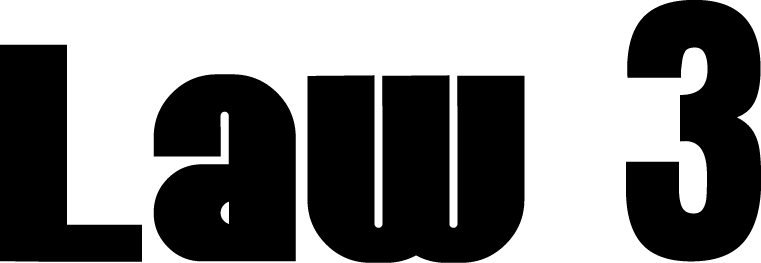
What is Cybersecurity
Cybersecurity refers to measures taken to protect internet-connected devices, networks, and data from unauthorized access and criminal use. Additionally cybersecurity ensures the confidentiality, integrity, and availability of data over it’s entire cycle. Cybersecurity applied to both software and hardware, as well as information on the internet. It can protect everything from to personal information to complex government systems.

The laws and regulations are excluded for the plan and all services for the plan to be done and for services for now. Thanks team xx.
Understanding Cybersecurity
Understanding measures include preventing, detecting, and responding to cyberattacks. Any information stored on an internet connected device, computer system, or network can be hacked. With the proper measures in place, this can be prevented. Given that the world is more reliant on computers than ever before, cybersecurity has become essential.
Cybersecurity ranges from simple to complex. As a basic preventative measure, most devices come equipped with password protection to prevent hacking. Updating software is another straightforward way to prevent cyberattacks.
If a system is attacked or at risk of an attack, specific measures might be taken depending on the type of attack. Encryption for example, is one wat to prevent attackes, and certain antivirus software can detect suspicious activity online and block most software attacks. In order to ensure that a system is secure, it’s essential to understand the risks and vulnerabilities inherent to that specific device or network and whether or not hackers can exploit those vulnerabilities.
Types of Cyberattacks
Cybersecurity can have wide-ranging effects on individuals, businesses, and government organisations, inlcuding moneytary loss, identity theft, and reputational damage. They are classified by the method of attack. Though there are many types of cyberattacks, some of the most common include
PHISHING
Phishing occurs when an email or text appears to be sent from a reputable source. The goal of phishing is to trick the recipient into sharing sensitive information like credit card details and login credentials or to install malwar on the victim’s machine. Phishing is one of the most common attacks on consumers.
MALWARE
Malware is malicious software intended to cause damagae to a computer or network. Types of malware include viruses, worms, spyware, and ransomware. Malware can find its way onto computers whena user clicks a link or email attachement that installs malicious software.
EAVESDROPPING ATTACKS
An eavesdropping attack is when a hacker intercepts, deletes, or modifies data as it is transmitted over a network by a computer, smartphone, or another connected device. Cybercriminals take advantage of unsecured network communications to access data as a user sends or reciecves it.
Eavesdropping often occurs when a user connects to a a network that is not secures or encrypted and sends sensitive business data to colleague. Eavsdropping attacks can be hard to spot because, inluke some other cyberattacks, the presence of a listening device may not affect teh device or network’s performance.
DENIAL OF SERVICE ATTACKS
DOS attacks target devices, information systems, and other network resources to prevent legitimate users from accessing servIces and resources. This is typically accomplished by flooding the server and the host with traffic to the point that it becomes inoperable or crashes. DOS attacks are systems on system attacks, meaning they originate from a single location and target a single system.
DISTRIBUTED DENIEL-OF-SERVICE ATTACK
Distributed denial-of-service (DDOS) attacks are similar, but the attack comes from multiple remote machines (zombies or bots). These attacks can be deployed much faster and with more traffic than DOS attacks, so they are typically harder to detect than DOS attacks.
Common Types of Cybersecurity
Though any individual system is at some level of cyberattack riisk, larger entities such as businesse and government systems are often teh targets of these attacks because they store a lot of valuable information. The department of Homeland Security, for example, uses high-tech cybersecurity measures to protect sensitive government information from other countries, nationstated, and individual hackers.
Any financial systems that stores credit cards information from it’s users is at hight risk because hackers can directly steal money from people by accessing these accounts. Large businesses are often attacked because they store personal information about their extensive network of employess. The indusrties with the most cyberattacks between November 2020 and October 3021 by basic web application attacks are finance, healthcare, professional, public administration and information.
What is the Difference Between DOS and DDOS?
Both types of attacks overload a server or web application to interrupt services for legitimate users. A DOS attack comes from a single location, so it’s easier to detect it’s origin and server teh connection. DDOS attacks iroginate from multiple locations. They are faster to deploy and can send much larger ammounts of traffic simultaneously, so they are harder to detect and shut down.

If there is vulnerability it will be exploited
When ancient empires came up with the idea of banks, someone thought, “I want to rob that”. So since then, Banking has been a target of criminal gangs and activity. These robbery attempts have become increasingly sophisticated and complex over the centuries, leading to an arms race between would-be criminals and banks’ security measures.
Since the first computer bug was discovered, bad or good hackers have been looking for ways to get around the laws, policies and protocols that govern a computer system application, even our society in general. It’s mind-boggling to think about how far some people will go to find a way around whatever obstacle stands. The most dedicated hackers spend hours, days, and months researching and trying every method possible to exploit loopholes that enable them to do something for free or gain an undeserved benefit.
Some people have worked out how to block infra-red cameras from reading their registration plate using a simple self-adhesive, transparent polycarbonate cover. When placed over a number plate, it is almost impossible to detect by eye unless inspected closely. From simple activities like finding a way to shield your car’s registration plate to avoid paying toll fees or avoiding the law when snapped speeding, it’s incredible the time and effort some take to bypass paying a few quid!

Everything is vulnerability in some way
Cyber security is a major issue nowadays, and no matter how much time and money is spent on it, we can’t keep ourselves safe from cybersecurity risks. Everything is vulnerable in some way – no matter where you look or what the organisation is, hackers are always lurking in the shadows and waiting for their opportunity to strike. From large retailers to health insurance providers, no company can escape from these cyber attackers.
We’ve seen data breaches’ devastating effects, making us recognise cyber securities’ importance! It’s essential to protect our national security and organisations from potential threats! For decades, we’ve blindly trusted cloud security and computer processors to function innocently and do their job.
At the start of 2018, intel revealed that our technology workhorses carried a mess of catastrophic security vulnerabilities indicating that any hacker with malicious intent could bring chaos to all individuals, ranging from minor to primary, which means Law number two is unavoidable! Cybercriminals are everywhere and will stop at nothing to hack everything within their capabilities. It’s up to us to safeguard our data and sensitive information against their relentless attacks! Or, to the more obscure, In the mid-2000s, Stuxnet, a malicious computer worm, was used to infect a complex computer network and derail an entire illegal nuclear weapons programme. These days, finding ways around everything bad or good is known as ‘life hacking.’

Humans can trust even when they shouldn’t
Our lives are built on trust, yet trust can often get us in trouble. As much as we rely on it, trusting people can be tricky, leading to disappointment and misery. We must remember though – without faith in each other, there’s no way our society could operate! We positively anticipate that our tech and anyone who aids us will perform at its finest – just like a light turning on the moment we flip the switch.
With increased digital technology, we must remain alert and informed so that cybercriminals don’t take advantage. Just like how trusting our mechanic to fix a car takes diligent research to get the best result, we must extend this same amount of caution when dealing with digital tech and the people using it.
Trust is a two-way street, but it’s become our kryptonite regarding cyber-security. Hacking and online scams using people’s naivety are still rampant and all too common. From the $120 antivirus that will do nothing for your device security, or the subjective perception that forms filled out online must be trustworthy, these issues contribute towards an alarming number of breaches in data security.

With innovation comes an opportunity for exploitation
Innovation can be a double-edged sword, offering extraordinary potential and the chance of manipulation. Brilliant minds are everywhere – Alexander Graham Bell made the world smaller by inventing the telephone, connecting people worldwide. Bill Gates changed our lives with his Windows computer operating system, bridging humanity’s technological gap in a single mouse click and keystroke. Mark Zuckerberg created an unparalleled social media platform that brings billions of us together daily to share life experiences and tell our stories!
We now live in a digital age of IoT, and our lives have been revolutionised with new and improved ways to simplify life. But while this technology has its merits, hackers lurk in the shadows waiting to exploit any vulnerabilities they can find – like when Hackers impersonated a company’s CEO and requested that more than $220,000 be fraudulently transferred using artificial intelligence-based software during a scam – To how hackers can steal your passwords or to security researchers warning of “historical patterns of cyber attacks, and to expect to see cyber-attacks aimed at the west.”
Manaaki.net.nz taught us that it’s clear that with innovation comes risks and rewards, but staying one step ahead is vital for keeping ourselves digitally safe! Every day, revolutionary innovations are popping up to simplify our lives, from the comfort of our homes to taking care of ourselves. From cars that drive themselves to medical advancements designed for health and wellness, there’s no shortage of new inventions!

When in doubt see law number 1
And to finish off, Human nature has an uncanny ability to take advantage of even the tiniest weaknesses in security systems. If there’s a vulnerability, it will always be exploited with no exceptions. To stay safe online, we must understand this truth and think like hackers!
This website is certified under the law of manaaki.net.nz and founding government of Aotearoa NZ.












